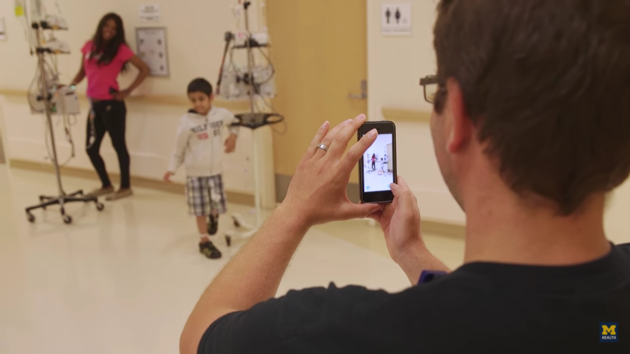
A children’s hospital is using Pokemon Go to encourage patients to get up and go.
C.S. Mott Children’s Hospital in Ann Arbor, Michigan is using the popular game to get kids out of their rooms so they can exercise and be social with other young patients.
It’s useful because Pokemon Go uses a phone’s GPS and a user’s location to create an augmented reality where a player looks for – and tries to catch — cute, little creatures called “Pokemon” in the real world.
“It’s a fun way to encourage patients to be mobile,” J.J Bouchard, digital media manager and certified child life specialist at C.S. Mott, told USA Today. “This app is getting patients out of beds and moving around.”

The hospital has also discovered that the game has another perk – it pushes kids to get more involved with their physical therapy.

“If I’m trying to get a kid to raise his arms up or squat down, I can say, ‘Hey [that Pokemon is] a little bit lower, can you reach down and get him?’” Bouchard told University of Michigan Health System in the above video.“And that’s just a really tricky way that physical therapy or occupational therapy can get a kid to do the exercises that he was screaming and crying about five minutes ago.”

There’s a social benefit too.
It forces users to leave their bedrooms in order to play, which has helped young patients and kids who struggle in social situations.
For instance, 6-year-old Ralphie, who has autism spectrum disorder and hyperlexia, often has a hard time in social situations, Today reported. But playing Pokemon Go has helped him to get to know kids his own age.

And, like C.S. Mott Children’s Hospital, other organizations are using the app in innovative ways. The game has helped an animal shelter in Indiana bring players to its facility to walk its dogs while they play.

And although other hospitals have had issues with the game – due in part to the game attracting people who are not patients to the facilities and compromising patients’ safety — C.S. Mott Children’s Hospital appreciates how the game is helping to foster a friendlier environment.
“It’s also a way to make the hospital less scary,” Bouchard told University of Michigan Health System. “Kids are exploring a place that maybe they were afraid of only five minutes before we introduced the app to them. Now they want to see every nook and cranny in the hospital and learn about it.”
